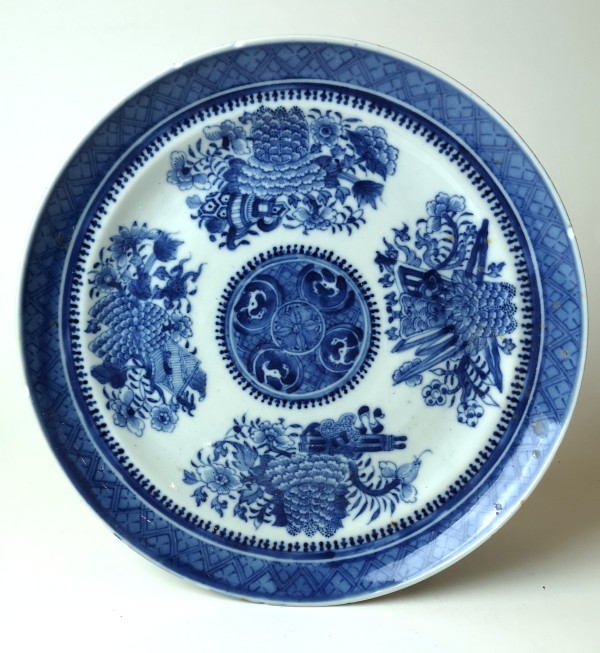
Fitzhugh Pattern Porcelain for British and American Markets, 1780–1820, named after the Englishman Thomas Fitzhugh who is thought to have ordered this design first.
Early formalized four paneled decoration on Chinese export porcelain. The name Fitzhugh for this pattern derives from an association with a blue and white service ordered around 1780 by Englishman Thomas Fitzhugh. Thomas Fitzhugh served from 1786 to 1800 in Guangzhou (Canton) as a director of the British East India Company. The most detailed decorations seems to be dating to the last decades of the 18th century. It occurs in several different colors, among which underglaze blue and white is the most common. Of the enameled varieties, green seems to have been the most popular.
This decoration can also be found with different center decorations copied from export prints, such as a pagoda, or various armorial crests.
Fitzhugh porcelain survives in a large range of dinner-, beverage- and ornamental-ware shapes and was particularly popular in North America. Underglaze blue and white Fitzhugh designs are most commonly met with. Yellow, black, or mulberry enameled Chinese Fitzhugh wares, as well as those bearing blue enamel and gilt ornament, are particularly rare.
Senior officers of the EIC were allowed to trade on their own account, and during the period 1704-1790s they shipped much of the pattern to England.
For more information see an article by J.B.S. Holmes in the American magazine "Antiques", January 1966, pp.130-1; also Spodes Willow Pattern and other Designs after the Chinese, Ch. 14, The Chinese Trophies and Fitzhugh Patterns, Robert Copeland, 1990.
A